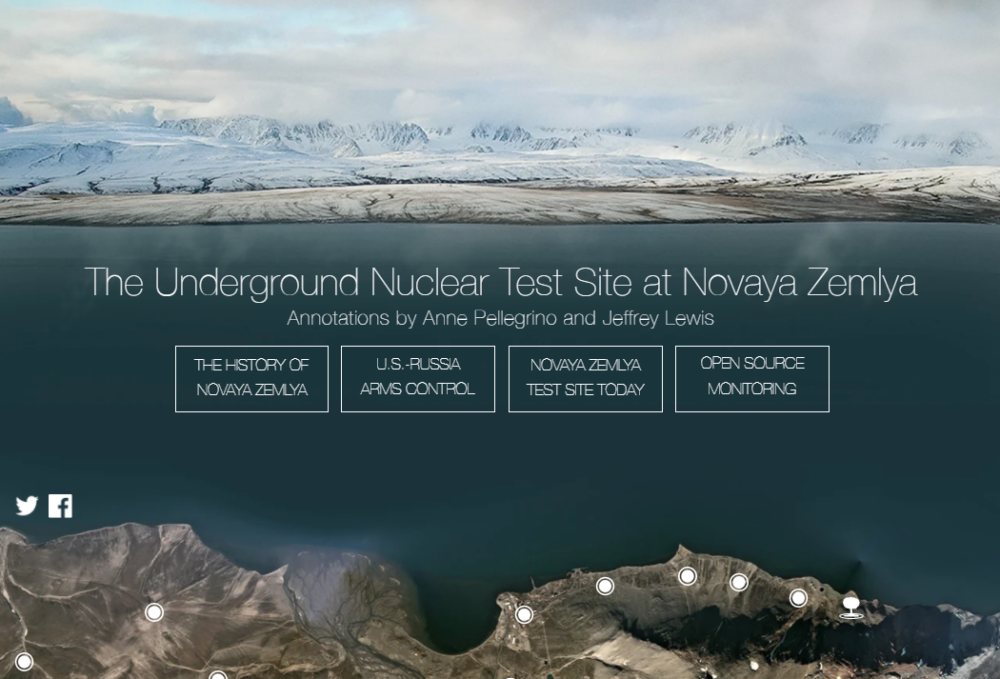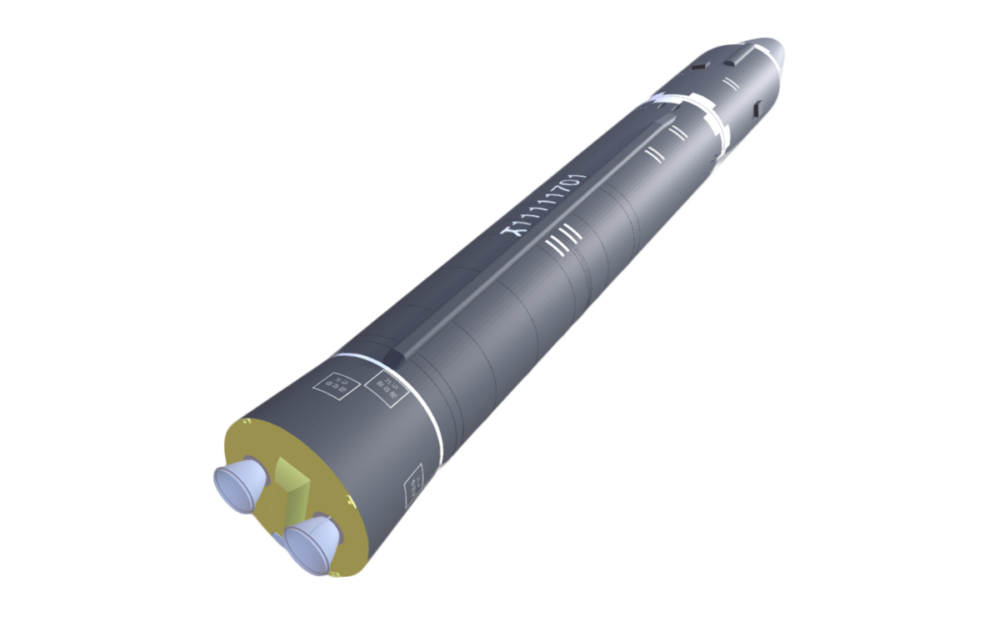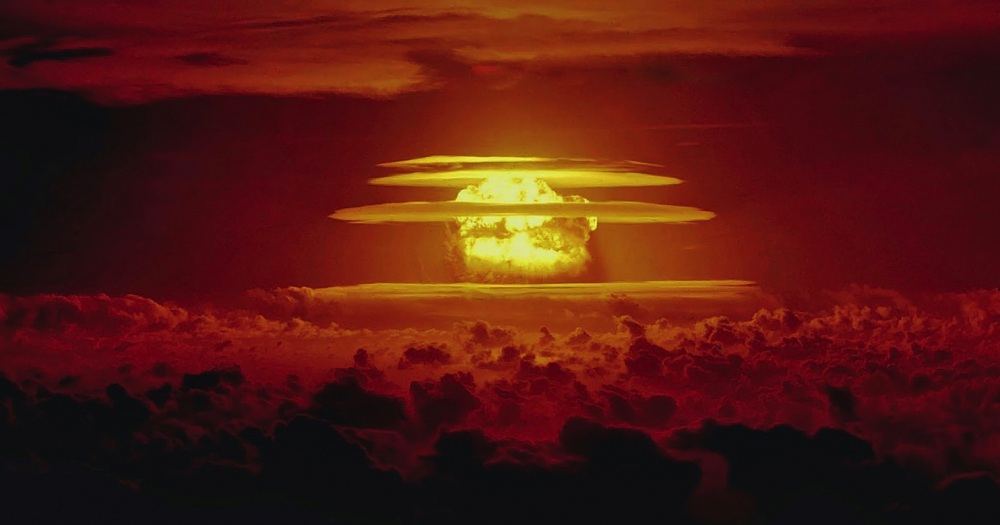
Jeffrey Lewis
Director of the East Asia Nonproliferation Program, The James Martin Center for Nonproliferation Studies
About the image
Twenty-eight years ago, on October 24, 1990, the Soviet Union conducted its last nuclear explosive test in a tunnel at the Novaya Zemlya nuclear test site. The following year, Mikhail Gorbachev announced a one-year moratorium on nuclear testing in the hope that the Soviet Union and the United States could negotiate a ban on nuclear testing. While Gorbachev was soon ousted from power and the Soviet Union collapsed, this step did result in negotiations on a comprehensive test ban treaty. Additionally, under President George W. Bush the United States announced an American testing moratorium in 1992. Ultimately, both countries signed the 1996 Comprehensive Nuclear Test Ban (CTBT) prohibiting all nuclear explosions. However, the United States and other key hold-out states (China, Egypt, India, Iran, Israel, North Korea, and Pakistan) have refused to ratify the agreement. As these states must ratify the treaty for it to enter into force, the test ban remains in limbo.
More than two decades later, there are serious questions about whether the United States and Russia will resume nuclear testing. During the drafting of the 2018 Nuclear Posture Review, some officials within the Trump administration argued for a return to nuclear testing. In the end, the authors of the 2018 Nuclear Posture Review punted: The text stated that the United States would not seek ratification of the CTBT and would “remain ready to resume nuclear testing if necessary to meet severe technological or geopolitical challenges.” 1
A U.S. return to testing would be a disaster. From a geopolitical standpoint, other countries are likely to follow suit – including Russia. As illustrated in this interactive tour of Russia’s Novaya Zemlya site, Russia also maintains high readiness levels to resume nuclear testing. The below interactive examines both historical and current activities at the site, with frequent reference to similar activities at the U.S. Nevada site. Comparing the U.S. and Russian test sites helps illustrate how both countries approached nuclear testing during the Cold War, how they manage their stockpiles today in an era without explosive testing, and the continuing importance of arms control to prevent a return to the shared dangers of the arms race.
While Russia, which ratified the CTBT in 2000, has been consistent in stating that it wants the United States and other holdouts to ratify the treaty and bring it into force, the continued refusal of the United States to do so is a source of discontent within the Russian nuclear weapons complex. While Russia and the United States have been able to make some advances with regard to nuclear weapons designs absent nuclear testing, a return to nuclear explosive testing would reignite the arms race and allow both countries to resume the process of developing new and more exotic nuclear weapons.
There are also the environmental and human health consequences of nuclear testing. Although underground nuclear tests are meant to contain radioactive material, there have been significant radiation releases from underground testing. In the United States, the most famous event occurred during a test called Baneberry in 1970, in which 80,000 curies of radioactive iodine-131 were released into the atmosphere – comparable to a small atmospheric nuclear test. At Novaya Zemlya, 14 of the 31 tests released radioactivity into the atmosphere. One event, in 1987, was particularly serious. A test in tunnel A-37A vented along a fault, resulting in an evacuation effort of test personnel using more than a dozen helicopters.
It would not be in U.S. strategic or environmental interests to resume nuclear testing. Yet the United States steadfastly refuses to ratify the CTBT. This reflects, among other concerns, a suspicion that Russia could be conducting some difficult-to-detect low-yield nuclear experiments in violation of the CTBT. Of course, Russian officials believe the same thing about the United States. During the debate in Russia over ratification of the CTBT, the head of ROSATOM claimed that the United States was conducting low-yield nuclear tests in secret.
Mutual suspicions and distrust have led to false accusations of cheating on the moratorium. In 1997, the United States demarched Russia after seismic stations detected what appeared to be a nuclear test at Novaya Zemlya. The United States had been looking for such an event after satellite images showed high levels of activity at the test site, including the presence of a helicopter at an airfield. As it turned out, however, the event was not a nuclear test at all, but an earthquake in the Kara Sea. 2
One reason for mutual suspicion is that both the United States and Russia maintain their nuclear test sites in a constant state of readiness. The Trump Administration also ordered the Department of Energy to be prepared to conduct “a simple test, with waivers and simplified processes” in as little as six months at the Nevada Test Site. 3 Based on satellite imagery analysis, it is clear that Russia also maintains its test site in a state of readiness.
A second cause for mutual suspicion is that both the United States and Russia conduct so-called “subcritical” experiments in underground facilities at their test sites. These experiments do not produce any nuclear yield, so they are not prohibited by the CTBT. Because the preparations for subcritical experiments are identical to those for low-yield nuclear tests, there are persistent concerns within the United States and Russia that the other party may be using them to mask prohibited activities, such as very low-yield tests.
The United States conducts subcritical experiments at the Nevada Test Site in an underground complex known as U1A. Open source monitoring suggests that Russia, too, has such a facility, and conducts about five subcritical experiments per year. In 2012, ROSATOM announced that Russia would resume subcritical testing at Novaya Zemlya. A few months later, imaging satellites detected construction at Novaya Zemlya, including the digging of a new underground tunnel complex at the A-8 test adit. The new facility, which also includes four new buildings, may be a dedicated facility for conducting subcritical experiments, similar in size and scope to the U1A complex.
The identification of Russia’s infrastructure raises the possibility of devising transparency, confidence-building and verification measures that might address some objections that have been raised to U.S. ratification of the CTBT. Opponents of ratification in the United States have raised the possibility that Russia is conducting prohibited experiments. Russian officials have raised similar concerns about the United States. The CTBT’s International Monitoring System (IMS), while exquisite, probably would not detect very low yield experiments at the two test sites.
While the CTBT cannot single out individual state parties for unusual levels of monitoring, the United States and Russia could agree to supplementary measures that would allow each party to be confident that the other was not conducting low-yield experiments in violation of the treaty at the two nuclear test sites. If this were undertaken as a bilateral agreement, the two parties would not be obligated to provide detailed technical informational about subcritical, hydronuclear and hydrodynamic nuclear tests to other states party to the CTBT.
The United States and Russia could agree to a supplementary agreement that restricts certain permissible activities, like subcritical experiments, to the pair of dedicated facilities in Nevada and Novaya Zemlya. The parties could further agree to transparency measures that would allow each side to verify that the other is only conducting permitted activities within the permitted locations. In the late 1990s, Princeton’s Frank von Hippel and Suzanne Jones described specific technologies and approaches for on-site monitoring of subcritical experiments. 4
Such an approach would be similar to how the Reagan Administration handled claims that Russia was violating the Threshold Test Ban Treaty, which limited the yield of nuclear explosions to 150 kilotons. Although the United States and the Soviet Union signed the Threshold Test Ban Treaty in 1974, the United States believed that the Soviet Union was continuing to conduct explosions that were larger than permitted under the treaty, leading members of the Senate to express reluctance to ratify the agreement. One of the first explosions to raise doubts about Soviet intentions was a 240 kiloton event at Novaya Zemlya in June 1978.
After several years of making little progress, the Reagan Administration in 1987 began to negotiate a supplementary verification protocol. The two parties resolved a number of important definitional questions and, ultimately, agreed to a most unusual “Joint Verification Experiment” in which two nuclear weapons were detonated – one in the Soviet Union, the other in the United States – to allow the two countries to calibrate their seismic monitoring capabilities. 5
Of course today, the challenge is different in some important respects. And yet the underlying issue is the same: Can the two parties implement technical solutions that would build confidence and sustain the arms control regime? Looking at the layout of Russia’s nuclear test site at Novaya Zemlya suggests that solutions exist, if only Washington and Moscow can find the political will.
For information on other nuclear policy relics of the Cold War, read our analysis of the lavish bunkers where Putin, Trump plan to fight a nuclear war.
Sign up for our newsletter to get the latest on nuclear and biological threats.
A collection of missile tests including the date, time, missile name, launch agency, facility name, and test outcome.
Christopher Nolan's Oppenheimer is the most high-profile film about nuclear weapons ever made.



